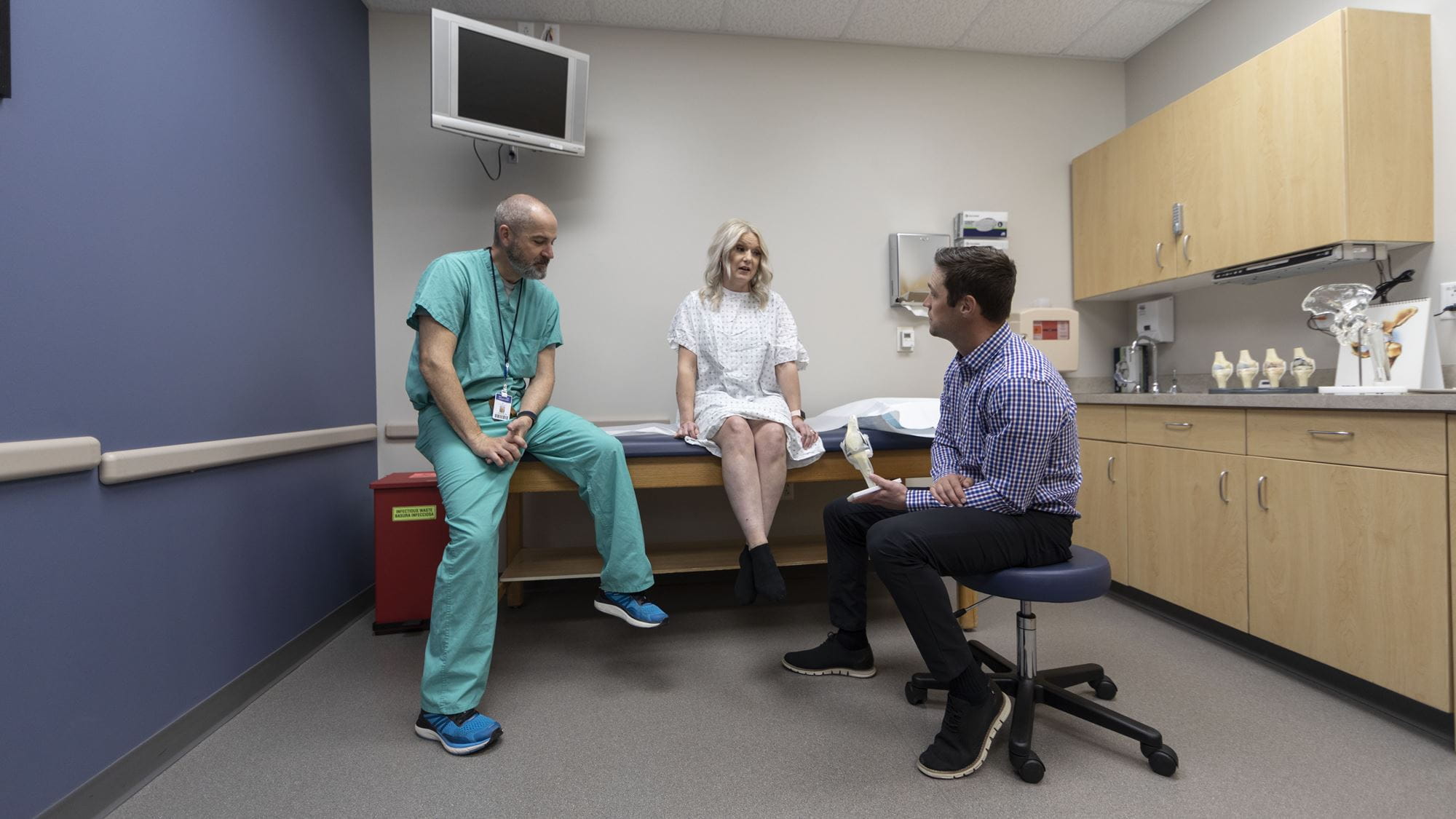What is a Rotator Cuff Injury?
Pain in your shoulder or at the top of your arm is often a sign of a rotator cuff injury. The rotator cuff is made up of muscles and tendons in the shoulder. These muscles and tendons hold the bones of the shoulder in place while allowing a wide range of movement. Of all the joints in the body, the shoulder joint is one of the most moveable. It allows you to reach up, behind you, and across your body.
When you have a problem with your rotator cuff, you will usually feel a pain or ache near the top of the arm, down the front, or on the outside of the arm. The rotator cuff can develop tendinitis from wear and tear or strain or have a sudden injury — a full or partial rotator cuff tear.
Tendinitis or Burisitis of the Rotator Cuff
Tendinitis of the shoulder is when the rotator cuff tendons get irritated and inflamed. The tendon connect the muscles to the bones. They can get worn down from overuse and start to get small tears. Overuse or strain can be from doing a certain activity (like throwing a ball or swimming) over and over again, or from the usual wear and tear that comes with living. Tendinitis causes soreness in the shoulder. It may hurt to do things like lift your arms up.
Bursitis happens when the bursae in the shoulder become swollen and inflamed. Bursae [burr-say] are small sacs fluid that make it easier for the tendons to glide over the bones when you move. Strain and overuse can cause inflammation in these sacs. This can make it painful to use your shoulder even for simple tasks.
Torn Rotator Cuff
A torn rotator cuff is when one of the major tendons in the shoulder tears and pulls away from the bone. A small amount of tendon may pull away from the bone, or it may tear completely. The tear can result from a fall or a hit to the shoulder. It can also happen with quick, forceful movements that your shoulder isn’t strong enough to do. You are more likely to tear the rotator cuff if the tendons are already inflamed because of long-term overuse.
Symptoms
Symptoms of tendinitis or bursitis in the rotator cuff include:
- Pain near the shoulder, usually down the front or outside of the arm. It may feel like an ache when you’re not moving the arm, but become a sharp pain when you try to lift the arm or do other activities.
- Stiffness in the shoulder
Symptoms a torn rotator cuff include:
- Pain. You may or may not have pain in the shoulder or arm, and it’s not necessarily a sign of how serious the injury is. For example, you may have a lot of pain with a partial tear, depending on where it is, but no pain with a full tear.
- Weakness in the arm
- Difficulty raising the arm
Causes
Rotator cuff injuries are most commonly caused by:
- Sudden injury, like a fall or hit to the shoulder.
- Repeated use of the shoulder — for example, in athletics or work that requires you to hold your arms above your head for a long time (such as painting).
- Age-related wear and tear.
- Weakness or imbalance in the shoulder muscles. Sometimes 1 or 2 of the shoulder muscles are much weaker than the others because of the way you sit or use your arms. Exercise and good posture can keep the shoulder strong and in balance.
Diagnosis and Tests
To diagnose a problem with your shoulder, the doctor may:
- Talk to you about your medical history, including what your shoulder feels like and when the problem started.
- Look at your shoulder and ask you to move it certain ways.
- Do one or more imaging tests, such as an X-ray or MRI. This lets the doctor see what is happening inside your shoulder. The doctor will likely do an X-ray first and then try an MRI if the shoulder isn’t getting better. The MRI can give the doctor more information about any damage to the soft tissue in the shoulder.
Treatments & Prevention
Treatments
Treatments for rotator cuff injuries include:
- Rest. While it is healing, take a break from any activity that requires you to use your shoulder.
- Relief. Change the way you sit, stand, or use your shoulder to reduce or remove strain.
- Ice. Use ice packs to reduce pain and inflammation in the shoulder after an injury or when you have pain from tendinitis or bursitis.
- Medicine. Nonsteroidal anti-inflammatory medicine (NSAIDs), such as ibuprofen, may help reduce pain and swelling.
Your doctor may also recommend:
- Physical therapy, to change the way you use your shoulder and make it stronger and more flexible.
- Cortisone shots, for shoulder pain and inflammation.
- Arthroscopy or other surgery to repair a torn rotator cuff and remove scar tissue. Surgery is followed by physical therapy once you have healed enough to use the shoulder.
- Rarely, the doctor may recommend shoulder replacement surgery for severe tears that are not repairable.
Prevention
You can prevent many rotator cuff injuries by keeping the shoulder strong and flexible, and using it properly.
- Be aware of how you are using your shoulders when you are working or doing physical activities.
- Give your shoulder some time to rest when you have been using it a lot.
- Keep your shoulders strong by exercising. Do stretches and gentle shoulder exercises to keep flexibility and a good range of motion in your shoulders.
- Think twice before you use your shoulder for something it is not strong enough to do—for example, doing heavy work with your shoulders.


